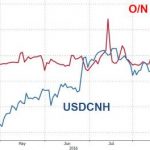Someone emailed me this article published at Yahoo!Finance that purports the Fed’s tightening is going to send stocks soaring, the DJIA mentioned specifically heading toward 25,000. The way in which this thesis was derived is the object of inquiry, starting with the belief that QE4 (QE5 by my reckoning) is forthcoming. This is not due to the Fed realizing its grave economic mistake but because the bond market is supposedly close to implosion.
Thus, more QE will be needed to save the treasury market and indirectly send stocks on a 2013-like odyssey. The foundation for this speculation, however, is what calls for clarification:
In order for this to occur, the Fed would need to reverse its current tightening stance and expand its balance sheet again with more quantitative easing. This would require a tremendous shock because the Fed does not want to lose credibility by reversing monetary policy too soon.
Lamoureux believes this shock will come from a U.S. government bond market implosion, which in turn will stem from the Fed’s second mistake—draining money from the economy too quickly.
Since September 2014, the amount of money that banks park at the Fed, called excess reserves, has dropped by $370 billion.
Lamoureux believes this money has temporarily plugged a hole in the bond market, which is teetering on the precipice of collapse.
So what Mr. Lamoureux claims is that the balance of reserves at the Fed is both “tightening” and “draining” but at the same time being used in the treasury market to “plug a hole” if only temporarily. As with most things about central banks, the math is right but little else is.
It is entirely true that reserves, excess or not no longer matters in any meaningful sense, have declined by about $350 billion since September 2014. The Fed’s H.4.1 statement for September 17, 2014, (the article doesn’t specify which week, so I picked one in the middle) shows total reserves of $2.797 trillion against the January 21, 2016, H.4.1 that declares only $2.455 trillion – a difference of -$343 billion. Is that the Fed tightening? Not remotely.













Leave A Comment